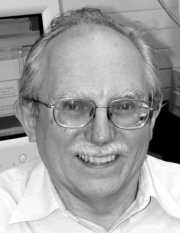

Peter Pulay

Born September 20, 1941 in Veszprém, Hungary.
Roger B. Bost Professor of Chemistry, Department of Chemistry and Biochemistry, University of Arkansas, USA
Email:pulay@uark.edu
WWW: external link
Award of the Hungarian Academy of Science 1979. Medal of the International Academy of Quantum Molecular Sciences 1982. Citation Classic 1988. Foreign Member, Hungarian Academy of Sciences, 1993. Board of Directors, International Society of for Theoretical Chemical Physics, 1994, Alexander v. Humboldt Senior Scientist Award, 1996. His work was cited in the official background material for the 1998 Nobel Prize in chemistry. Honorary doctorate, Eötvös University, Budapest, 2001. JACS 125 Most Cited Paper list (No. 64). The 2003 Schrödinger Medal of WATOC. Southwest American Chemical Society Award, 2003. Fellow of the American Association for the Advancement of Science, 2005.
Author of:
Important Contributions:
- The gradient method: This method made practical the ab initio determination of the structures of polyatomic molecules, and initiated a whole field. It was generalized to open-shell and multiconfigurational wave functions, third derivatives, and coupled-pair wavefunctions.
- Coordinates for geometry optimization: Natural internal, and later redundant internal coordinates for ab initio geometry optimizations.
- Force constants: The first systematic investigation of polyatomic vibrational force fields by ab initio methods. The Scaled Quantum Mechanical (SQM) method to correct for systematic errors.
- DIIS: The DIIS SCF convergence acceleration technique, and its generalization to open-shell and multiconfigurational wavefunctions.
- Local correlation: Based on Meyer's SCEP formulation, Pulay and Saebo have developed the first practical local correlation method.
- Multiconfigurational Wavefunction: The UNO-CAS method (CAS-SCF quality results at much lower cost); Generalized Møller–Plesset theory for multiconfigurational root functions (with Wolinski).
- NMR shifts: Introduction of modern gradient techniques in the ab initio calculation of NMR chemical shifts by the gauge-including atomic orbital method (with Wolinski and Hinton).
- Parallel ab initio Calculations: Principal author of the PQS suite, aimed at the parallel calculation of molecular properties: SCF and DFT energies, forces, force constants, NMR shifts, MP2 and coupled cluster energies.